Lawn care in spring and summer
How you look after your lawn depends on what you want to achieve. To encourage wildflowers for pollinating insects, now is the time to stop mowing and relax, but if you want a well-trimmed, thriving green lawn, there are several things you can do in spring and summer to get it into good shape.
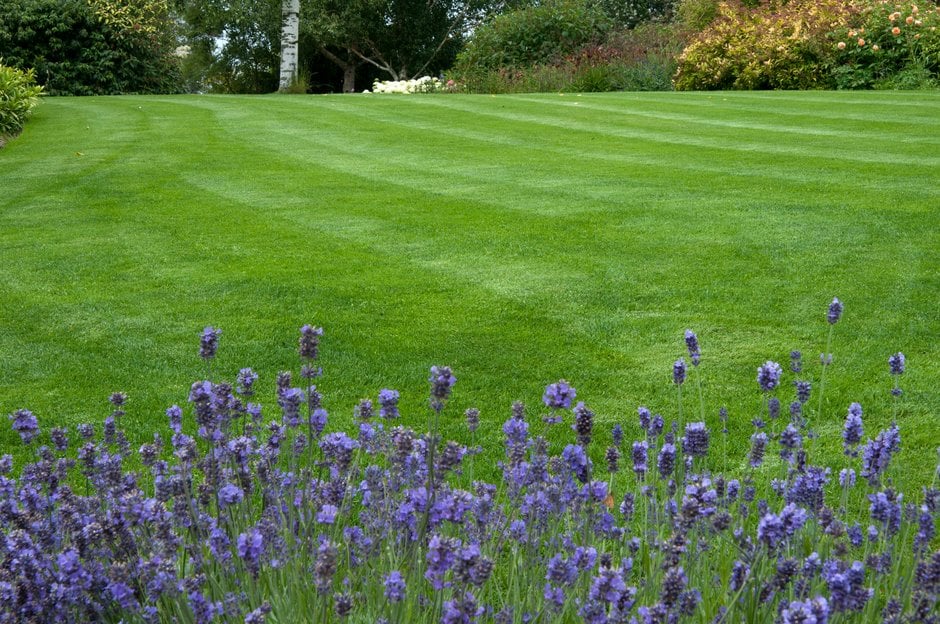
Quick facts
Timing: Early spring until late summer
Difficulty: Moderate
Looking after all lawn types
Lush, neatly trimmed lawns are a traditional favourite – ideal for setting off colourful borders, great for kids to play on and for relaxing outdoors over the summer. But to keep this type of lawn looking its best takes some time and effort, especially through spring and summer.
Many people prefer a more relaxed approach, allowing wildflowers to flourish among the grass. And if that’s the case, you can take a break from mowing in late spring and enjoy the wildflowers that appear and the pollinating insects and other biodiversity they attract. Spring is also a good time to create a new wildflower meadow or boost the diversity of your existing lawn.
And even regularly mown lawns offer a habitat for many invertebrates and valuable soil-life, especially when the grass is lush, green and thriving. So it’s well worth looking after your lawn, whatever style you have, to ensure it’s in great condition.
Key lawn care tasks
Once the weather warms up in spring and grass starts back into growth, it’s a good time to give your lawn some extra care and attention, to prepare it for the rigours of summer.
Regular maintenance is the best way to keep a traditional lawn looking neat and healthy, and avoid the need for larger-scale renovation later – and below are a few simple tasks you can carry out through the first half of the year.
Also see our monthly lawn advice for March, April and May.
Mow your lawn…
Once your grass starts to grow in spring, you can begin regular mowing – this helps to keep the lawn growing strongly and deters weed growth.
For advice on the different cutting heights and mowing frequencies for spring and summer, see:
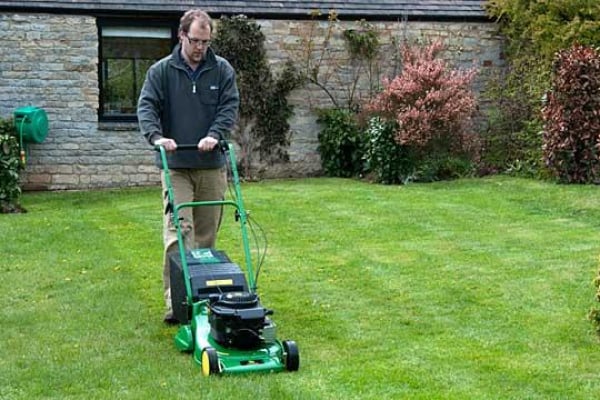
Lawn mowing guide
…or let wildflowers flourish
If you’d prefer to mow less and allow more native plants to flourish in your lawn, then No Mow May is a great way to start. As the name suggests, you simply stop mowing in early May, which allows the wild plants already in your lawn to grow up and flower, providing pollen, nectar and shelter for insects and other wildlife. You can leave your whole lawn uncut or just a section. It’s an easy way to use your existing garden to provide even more wildlife benefits.
You can either re-start mowing in June or leave the grass uncut until August to encourage a greater diversity of plants. See our guide to starting a wildflower meadow, which includes advice on converting your lawn.
If you already have a wildflower meadow, follow our tips on how to look after it and when to cut it:
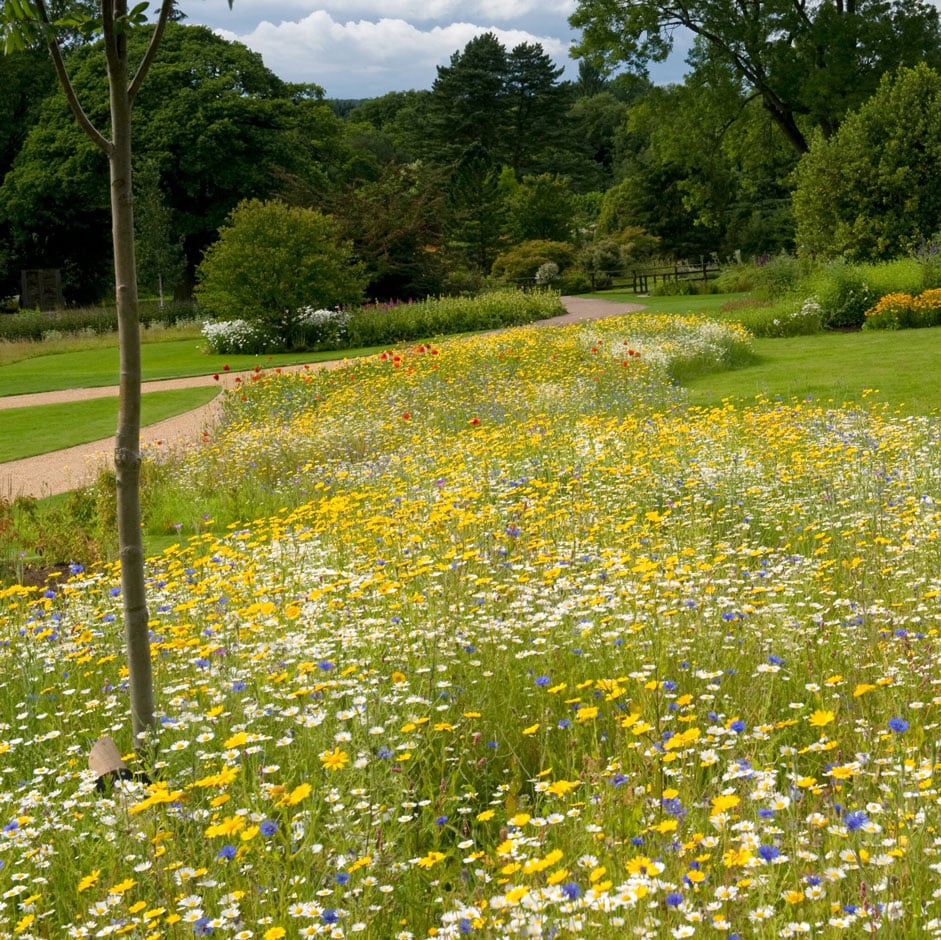
Wildflower meadow maintenance
Also see our wildlife gardening section for more biodiversity tips, and find out more about No Mow May from the campaign organiser, wildflower charity Plantlife.
Give your lawn the edge
Spring is the ideal time to use a half-moon edging iron or flat-bladed spade to cut a 7.5cm (3in) ‘gutter’ around your lawn. This helps to prevent grass creeping from the lawn into your borders.
Keep the lawn looking smart by using long-handled edging shears after mowing, to trim back any long, overhanging grass that the mower doesn’t catch.
To feed or not to feed...
Most lawns will grow perfectly well without being fed, giving you a green carpet to enjoy through much of the year. Traditionally, fertiliser was applied to lawns in spring to improve their vigour and help prevent weeds and moss from establishing. But in many parts of the UK, our changing climate means that drought is now a bigger factor than lack of feeding in allowing weeds and moss to establish in lawns.
Additionally, if you want to develop a more relaxed, wildflower-friendly lawn, then feeding is not required.
Still, although not essential, feeding will give your lawn a boost, especially if you want a lush, dense, all-grass lawn. When applying lawn feed:
-
Be aware that artificial fertilisers take a lot of energy to manufacture and may have detrimental effects on the environment, so only apply if required and use the minimum amount to keep your grass in good shape – see our guide to using fertilisers and our guide to organic gardening
-
Choose a specific spring/summer lawn fertiliser and apply it at the manufacturer’s recommended rate in mid-spring, while the lawn is green and actively growing (usually late March/April). These feeds are high in nitrogen, to boost leafy growth, and usually release their nutrients slowly over several months
-
Apply the fertiliser evenly across the lawn, ideally in cool, moist conditions when rain is expected, or lightly water it in afterwards
-
If your lawn still looks below par in a couple of months, you can try another application, but not beyond August, as that would encourage green leafy growth too late in the year, when it could be damaged by winter cold, pests or disease
Water new lawns
In most areas of the UK, rainfall from autumn to spring is usually sufficient to keep lawns lush, green and healthy.
In summer, when rainfall is usually lower, lawns can start to look parched, and in periods of drought the grass may turn brown and even die back. However, established lawns will soon recover once rainfall returns, so watering is generally not necessary. If you do want to water, use stored rainwater or grey water (washing-up or bath water, for example) wherever possible, instead of mains water.
For tips on looking after lawns in dry spells, see our guide:
Lawn care for drought
New lawns, on the other hand, need watering regularly if rain is in short supply, until well established. But take care not to over water, as this may result in shallow rooting and poor establishment. Watering every seven to 10 days is normally sufficient, or less if the weather is damp. Make sure the water reaches a depth of 10cm (4in) after each watering.
For more on what, when and how to water your garden, see our guide:
Watering
Weed out unwelcome guests
One gardener’s weedy lawn is another’s wildflower meadow. The more plants that grow in your lawn, the more biodiverse it will be. However, if your aim is a traditional grass lawn, then certain plants may be unwelcome. Some may just be unsuitable in that location, while fast-spreading or more dominant species may get out of hand if left unchecked.
To remove unwanted plants from your lawn, try hand weeding first. Persistence, and removing all the roots, should bring improvements. As a last resort, selective lawn weedkillers are available. See our guides for all your options:
Controlling weeds in lawns
Lawn weeds: selecting weedkillers
Moss often thrives in damp, poorly drained lawns. Many people enjoy the look and feel of it as an alternative to grass, and it’s beneficial for lawn biodiversity, but not everyone is a fan.
If you want to reduce or get rid of moss, spring is a good time. See our guide:
Moss in lawns
Patch it up
If your lawn is looking sparse or has bare patches, you can sow a lawn seed mix in spring to bring it back to full strength by summer. Although early autumn is the ideal time for this job, mid-spring is also fine, once the weather is getting milder. For full details, see our guide:
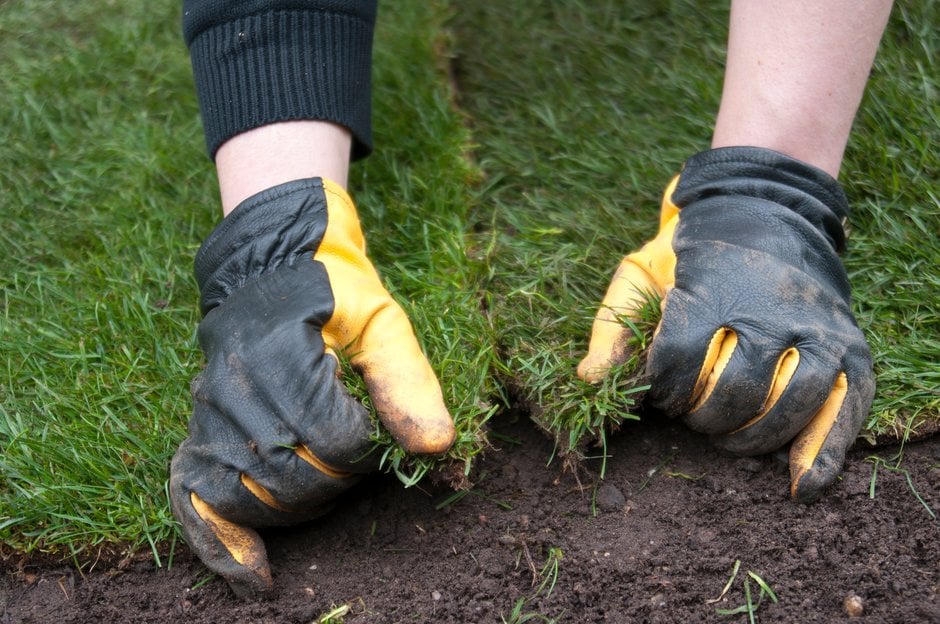
Repairing lawns
Problem solving
Lawns can be affected by a wide range of pests, diseases and other issues, and most can be successfully tackled in spring or summer if necessary. Common problems to look out for include:
Chafer grubs in lawns
Fairy rings
Fusarium patch and Snow mould
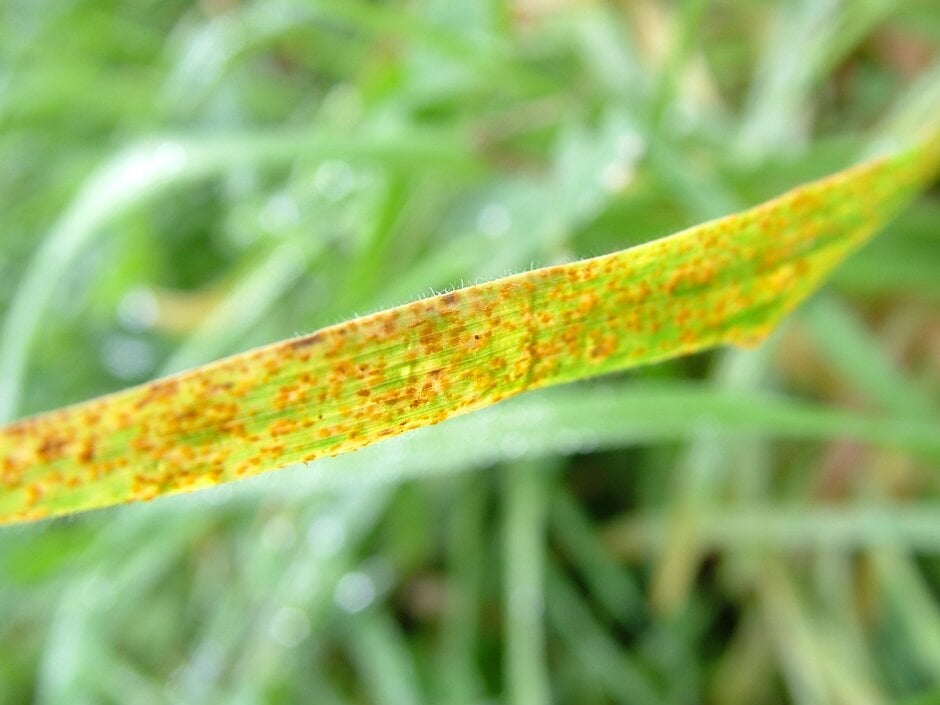
Lawn: rust disease
Lawns: dead patches
Leatherjackets
See also...
All our lawn advice
Monthly lawn tips: March
Monthly lawn tips: April
Monthly lawn tips: May
Lawn care in autumn
Repairing lawns
Lawn care during drought
Controlling lawn weeds
Moss in lawns
Making a wildflower meadow
Grow a low-carbon meadow
Step-by-step mowing
Get involved
The Royal Horticultural Society is the UK’s leading gardening charity. We aim to enrich everyone’s life through plants, and make the UK a greener and more beautiful place.